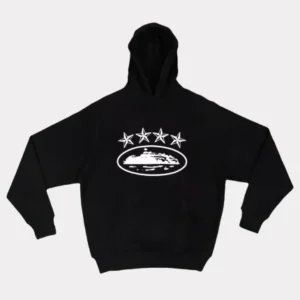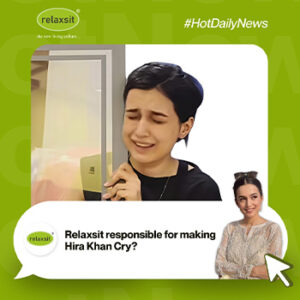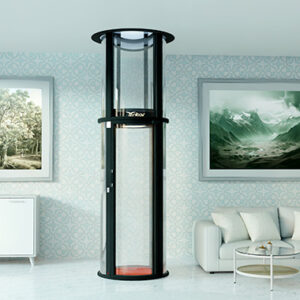If you think umbrellas are a simple, unchanging everyday item, the latest market trends might surprise you. In the past two years, the umbrella industry has quietly evolved into one of the most unexpectedly competitive product categories, driven by rapid design innovation, eco-conscious materials, viral social media trends, and smart branding strategies. While umbrellas may not sound like the type of product that sees big wins or losses, the numbers tell a very different story. Brands that once viewed umbrellas as a seasonal accessory are now treating them as year-round marketing assets, and retailers are investing in technology upgrades that are reshaping consumer expectations. One major driving force behind today’s growth is the surging demand for custom umbrellas with logo, a trend fueling a new wave of promotional and retail strategies.
Below is a human-style deep dive into what’s new, what’s trending, where profits are rising, where losses are shaking up the market, and what strategies brands are using to stay ahead.
Table of Contents
ToggleThe Unexpected Boom Behind a Familiar Product
Umbrellas have moved far beyond their role as a rain shield. The modern buyer is drawn to multifunctional, durable, eco-friendly, and stylish designs. This shift is largely driven by consumer behavior on platforms like TikTok, Instagram Reels, and Pinterest, where compact travel umbrellas, reverse-open umbrellas, and windproof storm models regularly go viral.
This exposure has expanded the umbrella audience from purely practical buyers to lifestyle-focused consumers. People now purchase umbrellas not just for the weather, but also as accessories—matching them with outfits, luggage, or seasonal aesthetics. The entire category has transformed into a fashion-meets-function segment.
Retailers that anticipated this shift early have reported notable profit increases, especially those offering umbrellas in bold patterns, photogenic colors, and compact designs meant for social-media-driven audiences. Meanwhile, brands that stuck to plain, traditional designs are facing stagnant or declining sales.
Sustainability Is No Longer Optional
Another dominant trend affecting profits and losses is eco-conscious production. Traditional umbrellas have a bad reputation for being cheaply made, breaking easily, and ending up in landfills. In response, buyers are gravitating toward:
- Recycled fabric canopies
- Reclaimed or biodegradable handles
- Metal-free frames
- Repairable parts
Brands adopting sustainable innovation have seen stronger customer loyalty and higher margins because consumers perceive eco-friendly umbrellas as long-term investments rather than disposable purchases.
Retailers ignoring sustainability, however, are paying the price. Poor-quality umbrella returns and negative reviews now significantly affect sales rankings, especially on e-commerce platforms where product quality is highly scrutinized.
The Rise of Tech-Enhanced Umbrellas
One trend shaking up the market is the introduction of technology-driven umbrellas. Some of the most talked-about innovations include:
- UV-blocking technology for sun protection, doubling umbrellas as parasols
- Auto-open and auto-close mechanisms for convenience
- Water-repellent nano-coatings for fast drying
- Wind-resistant double-canopy engineering
- Ergonomic handles designed for long carrying periods
Brands offering these upgrades have reported some of the highest profit jumps. Meanwhile, companies sticking with low-cost, fragile models have experienced increased losses as consumers become more informed and selective.
How Weather Patterns Are Impacting Sales
Weather unpredictability is another major factor in umbrella industry shifts. In regions experiencing unusually heavy rainfall, umbrella sales spike dramatically. However, brands overly reliant on seasonal patterns are facing challenges due to climate unpredictability.
To manage this, many companies are diversifying their umbrella lines to include:
- Travel sun umbrellas
- UV sun parasols for outdoor events
- Beach umbrellas with added wind resistance
- Compact car umbrellas
- Hybrid umbrellas designed for both sun and rain
This diversification helps stabilize profits even when rainfall varies year to year. Brands that fail to diversify are more vulnerable to financial swings.
Corporate Branding Is Fueling Massive Growth
One of the biggest profit drivers is the surge in demand for branded umbrellas, particularly custom umbrellas with logo. Companies across hospitality, tech, education, and real estate are using umbrellas as marketing tools because:
- They offer large, visible branding space
- They are practical gifts that people actually use
- They create mobile advertising wherever the user goes
- They reinforce brand presence during outdoor events
Large orders from corporations, universities, and event organizers have created a reliable revenue stream for umbrella manufacturers. Custom umbrellas have also become a preferred choice for trade shows, conferences, and festivals due to their strong visibility.
Businesses that pivoted early into customizable umbrella products have seen significant revenue increases. Those that did not invest in printing technology or design services are missing out on a booming segment.
Losses in the Low-Cost Market
While premium and tech-forward umbrellas are rising, the low-cost segment is shrinking. Factors behind this decline include:
- Poor durability leading to bad reviews
- Intense price competition
- Reduced consumer patience for fragile goods
- Increased demand for long-lasting, eco-friendly products
Manufacturers sticking to cheap, disposable umbrella models are experiencing shrinking margins and higher return rates, which directly impact profits.
Lifestyle Collaborations Are Setting New Standards
Umbrellas are gaining traction in the lifestyle space through collaborations with:
- Fashion designers
- Outdoor lifestyle brands
- Travel influencers
- Sports teams
- Artists and illustrators
These collaborations often produce limited-edition umbrellas that sell out quickly and create significant online buzz. Scarcity, aesthetic appeal, and influencer partnerships help build strong emotional connections with buyers. This trend has introduced new customers who would otherwise overlook umbrellas entirely.
Smart Strategies for Brands Entering Today’s Umbrella Market
Companies looking to succeed in the modern umbrella industry are embracing several winning strategies:
1. Prioritizing quality over quantity
Instead of mass-producing basic umbrellas, brands are focusing on durable, long-lasting models that justify higher price points.
2. Offering customization options
Consumers and businesses alike appreciate personalization, from prints and patterns to fully branded umbrellas.
3. Embracing storytelling and lifestyle marketing
Umbrella brands are incorporating imagery of travel, city living, fashion, and outdoor experiences to build emotional value.
4. Using sustainability as a core selling point
Eco-friendly materials now influence purchase decisions as strongly as design and price.
5. Leveraging social media virality
Showcasing creative umbrella designs on TikTok, Instagram, and Pinterest leads to organic reach and impulse purchases.
6. Introducing limited-edition collections
Exclusivity and novelty boost buyer interest and drive higher profit margins.
Where the Market Is Heading Next
Looking forward, the umbrella industry is expected to continue evolving through:
- Bigger investments in repairable and modular umbrellas
- Stronger eco-friendly innovations
- More partnerships with artists and fashion brands
- Expansion of UV and wind-resistant technologies
- Growth in custom-branded umbrellas for events and corporate gifts
Umbrellas may remain simple in theory, but their market trajectory is far more complex—and promising—than most people realize.
Final Thoughts
From sustainability and technology to viral aesthetics and corporate branding, the umbrella category has transformed into an unexpectedly dynamic market space. Companies embracing innovation, design upgrades, and custom branding opportunities are reaping significant rewards, while those clinging to old models struggle with declining profits and rising competition. As consumer expectations rise, umbrellas are becoming more than just a necessity—they’re evolving into expressive lifestyle items and powerful promotional tools. Businesses looking for fresh branding strategies are finding impressive success by investing in custom umbrellas with logo, and as demand continues to grow, these branded products are shaping the next major trend in Promotion Gift Ideas.





